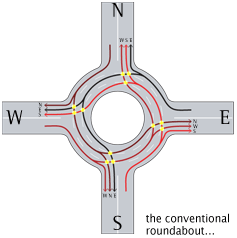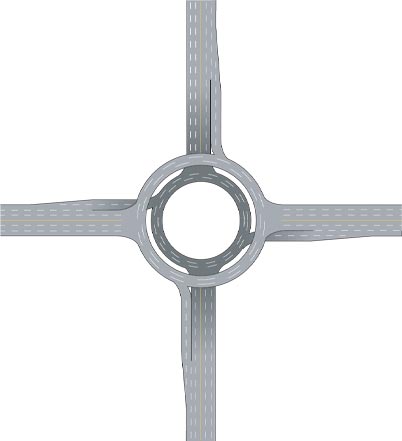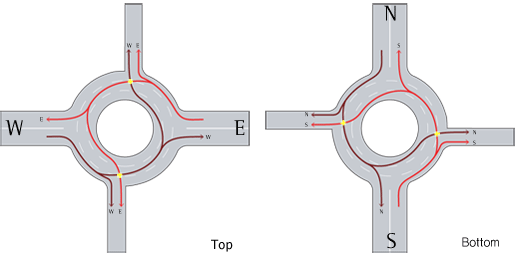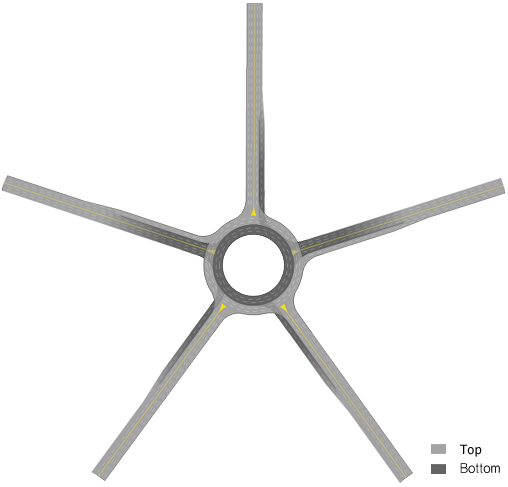 |
|
| |
|
- The conventional roundabout has been split
into two levels by directing traffic from 4 directions to top and
bottom levels.
- Intersecting points of traffic flow are reduced significantly
as vehicles traffic is divided into top and bottom levels as they
enter the intersection.
- Vehicles enter the roundabout to the top and bottom, so the number
of vehicles passing through each roundabout is reduced to increase
traffic flow.
|
|
| |
|
 |
|
| |
|
 -
Traffic from 4 directions enters the roundabout at the same time. -
Traffic from 4 directions enters the roundabout at the same time.
- In such case, smooth flow of traffic is possible when there are
few vehicles entering the roundabout, but beyond certain point,
efficiency falls drastically.
- The diagram on the right illustrates traffic flow in the conventional
roundabout. As seen in the illustration, there is a total of 12
points where vehicles cross paths.
|
|
| |
|
|
|
| |
|
 |
|
| |
|
| - Let’s separate and look at the flow of traffic entering the roundabout
from east-west, and from north-south independently. |
|
| |
|
|
|
| |
|
-  shows the part of the road used by traffic entering the roundabout
from east-west directions.
shows the part of the road used by traffic entering the roundabout
from east-west directions.
|
|
|
|
-  shows the part of the road used by traffic entering the roundabout
from north-south directions.
shows the part of the road used by traffic entering the roundabout
from north-south directions. |
|
| |
|
|
|
| |
|
| - The following is the “two-level roundabout” developed by Roadnext
by making Diagram 1 as the top level and Diagram 2 as the bottom level. |
|
| |
|
 |
|
| |
|
| - The Two-Level Round-About by Roadnext has only
two points of conflict, which significantly reduces crossing
of vehicles compared with the conventional roundabout. |
|
| |
|
 |
|
| |
|
| - Furthermore, it significantly reduces the number of vehicles entering
each roundabout. |
|
| |
|
For
example, if the number of vehicles entering the conventional roundabout
is 10 vehicles per minutes from each of the 4 directions, then the
number of vehicles passing through the roundabout is 40 vehicles per
minute (10 X 4)
However, under the same condition, the number of vehicles entering
the two-level roundabout is 20 per each level (10 X 2).
As such, 40 vehicles are involved in 12 points of conflict per minute
in the conventional roundabout. However, in the Two-Level Round-About,
20 vehicles are involved in 2 points of conflict per minute per each
level.
Please note that there may be varying possibilities, as this is a
simplified example to explain the number of points of vehicle conflict. |
|
| |
|
| - Furthermore, vehicles making U-turns and circling the roundabout
more than once have been omitted for easier understanding. |
|
| |
|
| - The Two-Level RoundAbout can be also applied to 5-way intersection. |
|
 |
|
 |
|

